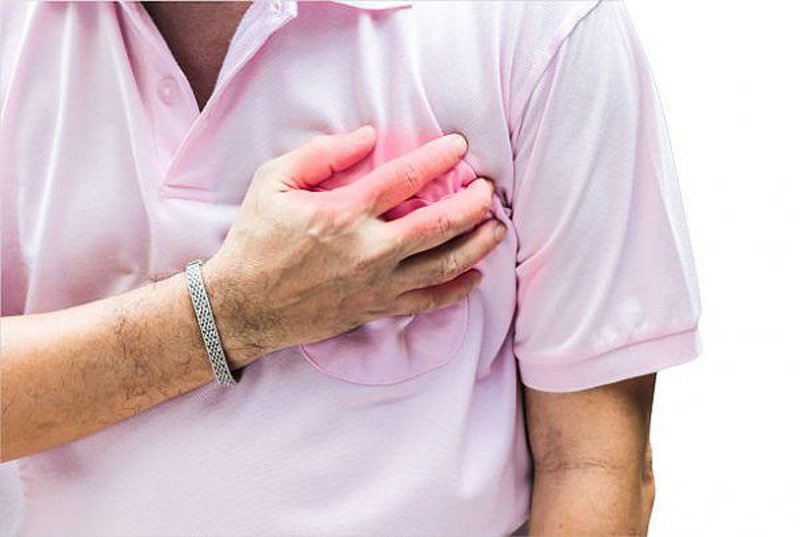Coronary artery disease is a common cardiovascular disease that can lead to many dangerous complications such as myocardial infarction, heart failure, etc. Understanding the causes, warning signs, and knowing how to effectively apply treatment methods will help minimize risks for patients.
1. What is coronary artery disease?
Coronary arteries are a system of blood vessels surrounding the heart, responsible for supplying oxygen-rich blood and nutrients for the heart to function.
Coronary artery disease is characterized by the presence of atherosclerotic plaques in the coronary arteries. This condition is also known as coronary heart disease, coronary atherosclerosis, or coronary insufficiency…
Over time, these atherosclerotic plaques thickening narrow the vessel lumen and reduce blood flow to the heart muscle. The heart muscle deprived of nourishing blood may cause angina, along with many dangerous complications such as myocardial infarction, arrhythmias, heart failure, and stroke…
2. How dangerous is coronary artery disease?
According to recent statistics, in the U.S., someone dies from coronary artery disease every 34 seconds. If not well controlled, coronary artery disease can lead to many dangerous complications that threaten the lives of patients, including:
2.1 Myocardial Infarction
Complications occur when a branch of the coronary artery is completely blocked, leading to myocardial necrosis and causing rapid death if not given timely emergency care. Warning signs of a myocardial infarction include:
- Chest pain lasting more than 15 minutes, not relieved by rest or vasodilator medication.
- Cold sweat.
- Difficulty breathing, exhaustion, pale face.
- Anxiety, restlessness.
- Nausea, vomiting.
- An urge to defecate…

If any of the above signs are observed, the patient should immediately stop physical activity and call for emergency help. At the same time, quickly chew one 300mg aspirin tablet and use a vasodilator by placing one 0.5 – 0.75mg tablet under the tongue or using a spray in the mouth 1 – 2 times. The management and emergency treatment of a myocardial infarction should be carried out urgently, as soon as possible within the first hour, as it is crucial for the patient’s survival, helping to increase the survival rate up to 96%.
2.2 Arrhythmia
When the heart muscle does not receive enough oxygen to function, it can lead to serious arrhythmias such as atrial fibrillation, ventricular tachycardia, ventricular fibrillation, etc., increasing the risk of sudden death.
2.3 Heart failure
Prolonged ischemia of the heart muscle will reduce the heart’s pumping efficiency and lead to heart failure.
3. Signs to recognize coronary artery disease
Chest pain is the most typical symptom of coronary artery disease; however, it can vary from person to person. Some people with coronary artery disease do not experience chest pain, which is often seen in the elderly, women, or diabetic patients, and is thus referred to as silent myocardial ischemia.
A typical chest pain is described as a tight sensation in the chest, right below the sternum, with a feeling of compression in the chest as if under great pressure. Sometimes the patient may feel sharp, burning sensations in the chest. The pain may then radiate to the neck, shoulders, and arms.

4. Causes of coronary artery disease
5. Who is at risk for coronary artery disease?
- Blood lipid disorders, high blood pressure, diabetes: damage blood vessels, promote the development of coronary atherosclerotic plaques.
- Smoking: nicotine in tobacco can damage and constrict coronary arteries.
- Overweight or obesity, sedentary lifestyle: increase blood cholesterol levels – a cause of atherosclerotic plaque formation.
- Unhealthy diet: consuming many fatty foods, low in vegetables and fruits.
- Older age: The older you get, the more likely coronary vessels are to weaken and degenerate.
- Family history: If you have relatives with coronary artery disease, you are at a higher risk than others.
- Stress: can cause coronary artery constriction, increasing the risk of angina.
6. Treatment methods for coronary artery disease
6.1 Medication treatment:
- Lipid-lowering medications: help reduce blood cholesterol and prevent vascular atherosclerosis.
- Anticoagulants: help reduce the risk of blood clots and prevent myocardial infarction.
- Vasodilators: help quickly relieve angina by relaxing the coronary arteries.
6.2 Intervention and Surgery
- Angioplasty and stenting: this method uses a tubular support called a stent, which is fixed in place at the site of the narrowed coronary artery to widen the vessel lumen.
- Coronary artery bypass surgery: using a healthy segment of a blood vessel from the patient’s leg, arm, or chest to bypass a blocked section of the coronary artery due to atherosclerosis, facilitating blood flow back to the heart.
- Do not smoke. Limit the use of stimulants such as alcohol, beer, coffee…
- Exercise for 30 minutes a day, 5 days a week. Engage in light, moderate activities such as walking, cycling, swimming…
- Lose weight if overweight. Properly control blood pressure, blood sugar, and blood lipids.
- Maintain a scientific diet: limit foods high in fat and cholesterol, reduce salt and sugar intake, and increase the consumption of green vegetables and fresh fruits. See details of the diet for people with coronary artery disease.


